 1992 Mitsubishi Debonair (S27) Dimensions, Size & Specs
1992 Mitsubishi Debonair (S27) Dimensions, Size & SpecsMeasurements of the 1992 Mitsubishi Debonair, engineered for optimal performance and comfort
| Dimensions | |
|---|---|
| Length: | 4975 mm195.9 in16.3 ft |
| Width: | 1815 mm71.5 in6.0 ft |
| Height: | 1440 mm56.7 in4.7 ft |
| Weight Specifications | |
| Curb Weight: | 1590-1780 kg3505-3924 lbs |
| Tire Specifications | |
| Tire Sizes: |
|
The Mitsubishi Debonair (S27) represents the luxury sedan segment of Mitsubishi’s lineup from 1992 to 1999. As a full-size sedan, the Debonair stands out with a substantial presence, measuring 4975 millimeters (approximately 196 inches) in length, 1815 millimeters (around 71.5 inches) in width, and 1440 millimeters (about 56.7 inches) in height. This sizable footprint contributes to a spacious and comfortable interior cabin, catering to executives and those seeking a premium ride experience.
Curb weight for the S27 generation ranges from 1590 to 1780 kilograms (3509 to 3924 pounds), reflecting its robust build quality and the inclusion of luxury features typical for its class and era. The vehicle rides on tires sized either 205/65 R15 H or 215/65 R15 H, offering a balance of ride comfort and road grip suitable for a sedan of this stature.
Produced over the span of seven years, the S27 Debonair catered primarily to the Japanese domestic market and competed within a traditional segment that valued refinement and understated elegance. Its slightly lower height relative to its length and width gives it a poised and aerodynamic stance while ensuring ease of access and ample headroom inside.
Overall, the Mitsubishi Debonair (S27) remains a noteworthy example of early 1990s luxury sedans. It blends size, weight, and styling to deliver a commanding yet comfortable driving experience. These specifications make it a solid comparator when evaluating luxury sedans from the same period, highlighting the distinctive approach Mitsubishi took within its domestic flagship model.
Discover the standout features that make the 1992 Mitsubishi Debonair a leader in its class
Have a question? Please check our knowledgebase first.
The 1992-1999 Mitsubishi Debonair (S27) has a length of 4975 mm (approximately 196 inches or 16.3 feet), a width of 1815 mm (about 71.5 inches or nearly 6 feet), and a height of 1440 mm (around 56.7 inches or roughly 4.7 feet). These dimensions reflect its design as a full-size sedan, offering a spacious exterior footprint. Its sizeable length and width provide ample room inside for passengers and enhance road presence, while the height balances aerodynamics and headroom.
The curb weight of the Mitsubishi Debonair (S27) ranges from 1590 kg to 1780 kg (approximately 3509 to 3924 lbs). This moderate to heavy weight contributes to a stable and smooth ride, particularly suited for a luxury sedan aiming for comfort over sporty agility. The weight influences the car’s handling by providing good road grip and stability at higher speeds, but it may slightly reduce acceleration and fuel efficiency compared to lighter vehicles. Overall, the weight is balanced with the powertrain to ensure a comfortable yet competent driving experience.
The Mitsubishi Debonair (S27) comes standard with tire sizes 205/65 R15 H and 215/65 R15 H. These 15-inch tires have a higher profile (aspect ratio 65), which helps absorb road imperfections and contributes to a smoother and more comfortable ride, enhancing its luxury sedan credentials. The tire width (205 mm or 215 mm) provides good road contact for traction and stability without compromising comfort. The H speed rating signifies the tires are rated for speeds up to 210 km/h (about 130 mph), which is adequate for the vehicle’s performance capabilities.
Yes, the Mitsubishi Debonair (S27) generally fits into a standard garage, but given its full-size dimensions, some considerations are necessary. Its length of 4975 mm (196 inches or 16.3 feet) and width of 1815 mm (71.5 inches or nearly 6 feet) require a garage space that accommodates vehicles around 5 meters long and just under 2 meters wide, allowing clearance for opening doors and maneuvering. Standard residential garages typically have internal dimensions around 2.4 to 3 meters in width and 5.5 to 6 meters in length, which should comfortably house the Debonair with minimal hassle.
Compared to its predecessor, the earlier Mitsubishi Debonair models, the S27 generation introduced in 1992 showed evolution in both exterior and interior dimensions aimed at enhancing passenger comfort and road presence. The S27 is marginally longer and wider, contributing to increased cabin space and a more imposing stance. While exact predecessor dimensions vary across years, the 4975 mm length and 1815 mm width of the S27 generally represent a size increase, reflecting Mitsubishi’s focus on solidifying the Debonair's status within the luxury sedan segment by offering more interior room and enhanced ride comfort.
When compared to other luxury sedans from the early to mid-1990s, such as the Toyota Celsior (Lexus LS 400) and Nissan President, the Mitsubishi Debonair (S27) fits well within the full-size segment. Its length of 4975 mm (196 inches) closely matches these competitors, which typically range from about 4900 mm to 5100 mm in length. Width at 1815 mm (71.5 inches) is also competitive, offering similarly spacious interiors and comfortable cabin space. The Debonair's size helped it compete in markets where roomy, high-comfort sedans with elegant dimensions were highly desired.
The substantial exterior dimensions of the Mitsubishi Debonair (S27) — length of 4975 mm, width of 1815 mm, and height of 1440 mm — translate into generous interior space, typical of a full-size luxury sedan. These dimensions allow for spacious front and rear seating areas, contributing to passenger comfort, especially on longer drives. The longer wheelbase (implied by sedan size) supports ample legroom, while the width provides comfortable shoulder space for occupants. The car’s height ensures sufficient headroom without compromising aerodynamic styling.
The Mitsubishi Debonair (S27) stands at 1440 mm (56.7 inches), which is relatively low for a luxury sedan. This moderate height contributes to a lower center of gravity, improving handling stability and reducing body roll during cornering, enhancing driving confidence and safety. From a practical perspective, the height makes it easier to fit under typical residential garage door heights (usually around 2 meters or 78 inches), so parking the Debonair does not require special accommodations, adding to its everyday usability.
The Mitsubishi Debonair's curb weight ranges from 1590 kg to 1780 kg (3509 to 3924 lbs), reflecting differences in trim levels and equipment. Heavier vehicles can require more energy to accelerate and maintain speeds, often leading to lower fuel efficiency. Furthermore, the relatively large dimensions (length nearly 5 meters and width over 1.8 meters) create more aerodynamic drag than smaller cars, especially at highway speeds. However, thoughtful engineering and efficient engine tuning can mitigate some of these effects. Overall, drivers may experience average fuel economy for a vehicle of its size and class, balancing luxury, power, and efficiency.
Owning the Mitsubishi Debonair (S27) comes with significant benefits linked to its generous dimensions and luxury sedan design. Its nearly 5-meter length and wide body provide spacious cabin room, allowing for very comfortable seating for all passengers, particularly in the rear, which is ideal for chauffeured driving or relaxed long trips. The vehicle's refined proportions also contribute to a smooth, stable ride quality, absorbing road irregularities effectively. Combined with its luxurious interior appointments typical of the segment and era, the Debonair offers a comfortable, premium experience that few other full-size sedans of its time could match.
Discover similar sized cars.
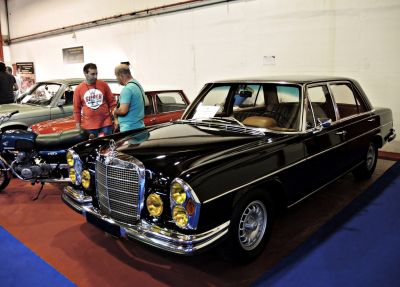
| Production: | 1965-1972 |
|---|---|
| Model Year: | 1966 |
| Length: | 5000 mm196.9 in |
| Width: | 1810 mm71.3 in |
| Height: | 1420-1440 mm55.9-56.7 in |
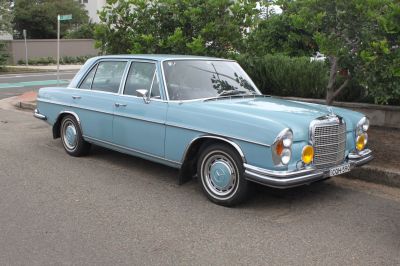
| Production: | 1970-1972 |
|---|---|
| Model Year: | 1971 |
| Length: | 5000 mm196.9 in |
| Width: | 1810 mm71.3 in |
| Height: | 1440 mm56.7 in |
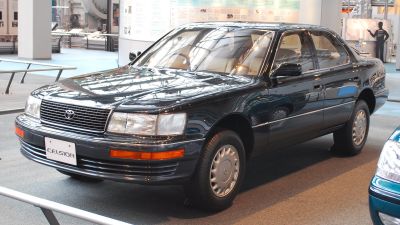
| Production: | 1989-1994 |
|---|---|
| Model Year: | 1990 |
| Length: | 4995 mm196.7 in |
| Width: | 1820 mm71.7 in |
| Height: | 1425 mm56.1 in |
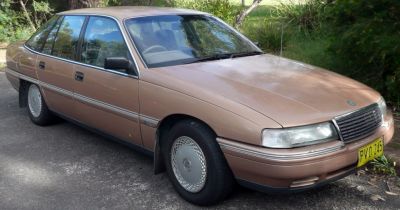
| Production: | 1990-1998 |
|---|---|
| Model Year: | 1990 |
| Length: | 4989 mm196.4 in |
| Width: | 1794 mm70.6 in |
| Height: | 1463 mm57.6 in |

| Production: | 1992-1998 |
|---|---|
| Model Year: | 1992 |
| Length: | 4980 mm196.1 in |
| Width: | 1810 mm71.3 in |
| Height: | 1435-1445 mm56.5-56.9 in |
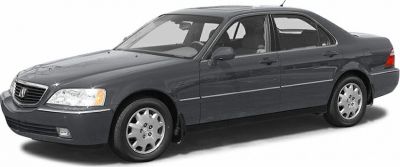
| Production: | 1995-2004 |
|---|---|
| Model Year: | 1996 |
| Length: | 4980-4995 mm196.1-196.7 in |
| Width: | 1810-1822 mm71.3-71.7 in |
| Height: | 1435 mm56.5 in |
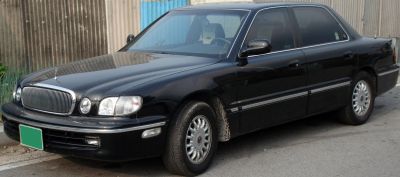
| Production: | 1996-2005 |
|---|---|
| Model Year: | 1996 |
| Length: | 4980 mm196.1 in |
| Width: | 1810 mm71.3 in |
| Height: | 1440 mm56.7 in |
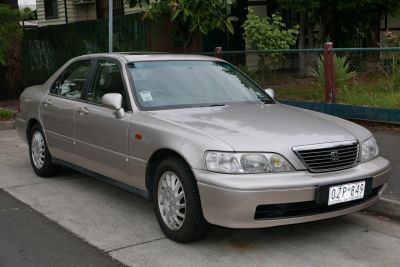
| Production: | 1996-2006 |
|---|---|
| Model Year: | 1996 |
| Length: | 4995 mm196.7 in |
| Width: | 1820 mm71.7 in |
| Height: | 1430 mm56.3 in |
